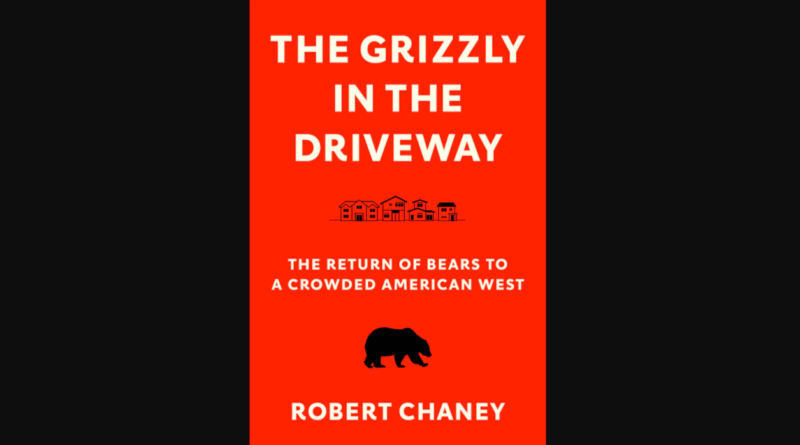REVIEW: ‘The Grizzly in the Driveway: The Return of Bears to a Crowded American West’ by Robert Chaney
Image courtesy of University of Washington Press / Provided by official site.
Robert Chaney’s new book, The Grizzly in the Driveway: The Return of Bears to a Crowded American West, takes a multi-lensed look at the debates and dialogue surrounding the iconic bears that call Wyoming, Montana, Idaho and Washington home. These silver-tipped bruins instill fairytale fear in many people because of their mammoth size and occasional (but still exceedingly rare) attack of an unsuspecting human. Others love the species and spend tourist dollars heading out to Yellowstone National Park, Glacier National Park and their environs for a chance encounter through the relative safety of a spotting scope. Then there are the ranchers who worry about livestock depredation, plus the long history of Native Americans’ connections and reverence for the bears.
In sum, the grizzly bear — the name given to brown bears in the lower 48 — is a species that has grabbed the attention of the public and made people question their image of the American West, the great wilderness, the national parks and their own backyards.
Chaney is an expert storyteller who is able to gather these disparate elements into one highly readable and vastly engaging tome, one that runs more than 200 pages and covers the bears’ history, present-day struggles and possible future. Framing the entire book is the question whether grizzlies should be delisted from Endangered Species Act protection, which would be a symbolic victory for the possibility of bringing back a species that was near extirpation (locally extinct), but would also open the bruins for a legal harvesting season.
To be expected, environmentalists line up on one side of the debate, while ranchers and hunters take the opposing viewpoint — but there are different degrees to each side’s entrenched positions. Chaney gives time to both sides, but he’s after more authentic reportage, including the science behind bear recovery, the Native American spiritualism tied into this iconic animal, the impacts of development in the bears’ range, and how visitors to the West love to snap pictures of the bears and post them on Facebook. He doesn’t take a stance, per say, instead coming down on the side of science, journalism and truth to tell the story and have a seat at the table.
Each of the chapters in the book is laid out almost in essay format, built around a central theme and helpful evidence. There’s usually a bear or an incident that begins the chapter and sets the plot in motion. One set of pages looks at Ethyl, a female grizzly whose monitoring device showed a range that was much larger than expected, giving those involved hope that the threatened animals could make wildlife connections between their preserved lands. Another chapter looks at genetic research (“From a Single Hair”), while one looks at the legal wrangling around delisting (“Grizzly at Law”). The chapter about Native American tribes revering the bear (“Spirit Animal”) is one of the best selections in the book, while the “Roadkill” chapter shows the logistical complications of having roads and highways in bear country.
Chaney is a reporter for The Missoulian, and he clearly knows his subject matter and has access to interesting archival information and present-day sources who can descriptively detail their encounters with the bears and their work in the backcountry. A few of the stories come from Chaney’s previous articles, including one involving a Vietnam veteran protecting his dogs from a large grizzly bear (this was an encounter that ended with the bear being stabbed to death).
The stories about the bears themselves are fascinating, like any good campfire tale, but the tales of science and research that have gone into the management of this animal species are the real takeaways. There are also societal, political and philosophical considerations that Chaney broaches.
One commonality amongst the various strains in this fine, fine work of journalistic reporting is that a lot of people have a lot of opinions about the same topic: what’s the best method to ensure the long-term survival of grizzlies while also recognizing that the American West is changing under the hands of near-constant development. The answers to that query will be debated for a long, long time, all while the bears in question will await their verdict.
By John Soltes / Publisher / John@HollywoodSoapbox.com
The Grizzly in the Driveway: The Return of Bears to a Crowded American West by Robert Chaney. University of Washington Press. 288 pages. Click here for more information.

